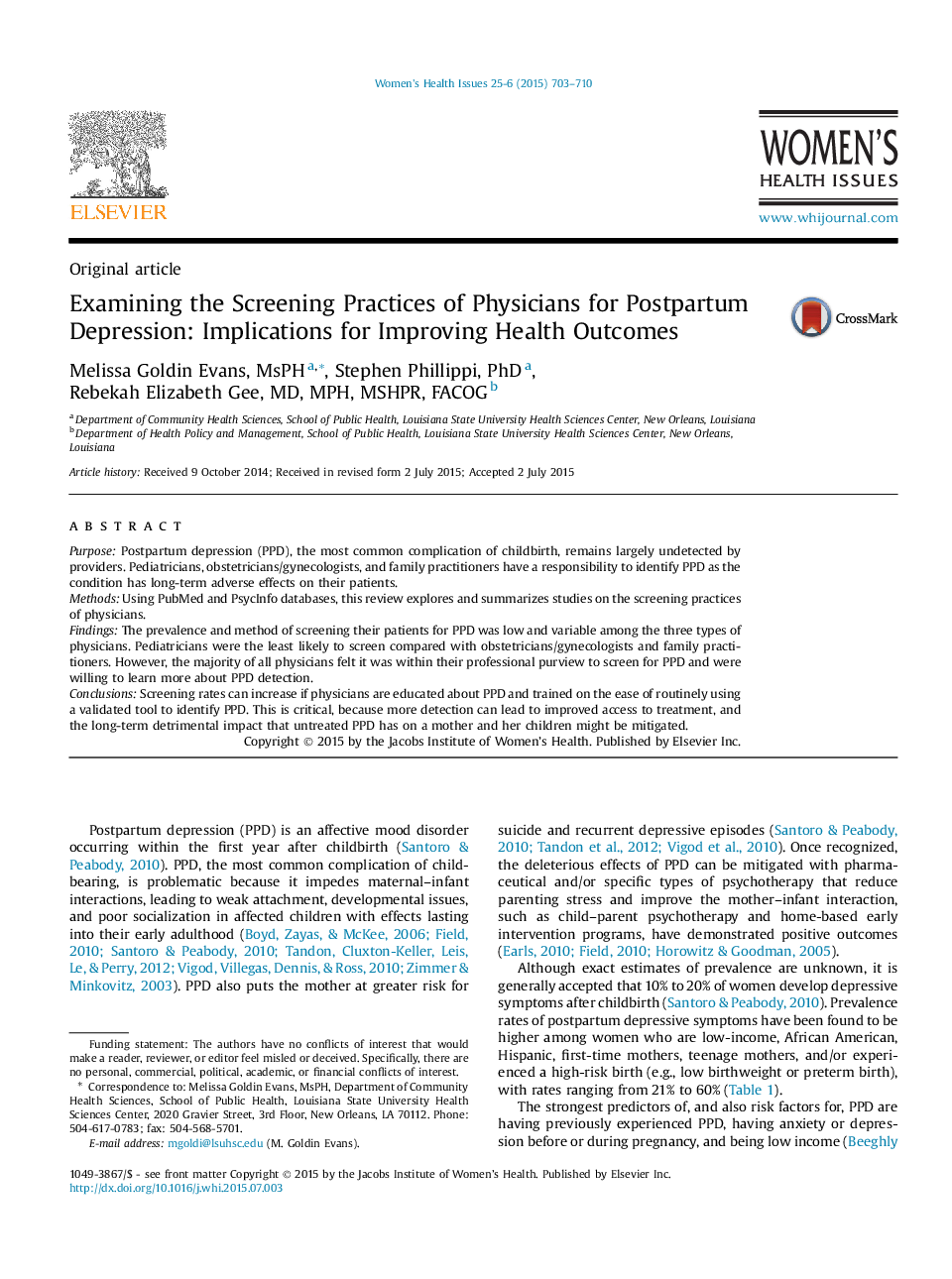| Article ID | Journal | Published Year | Pages | File Type |
|---|---|---|---|---|
| 1093003 | Women's Health Issues | 2015 | 8 Pages |
PurposePostpartum depression (PPD), the most common complication of childbirth, remains largely undetected by providers. Pediatricians, obstetricians/gynecologists, and family practitioners have a responsibility to identify PPD as the condition has long-term adverse effects on their patients.MethodsUsing PubMed and PsycInfo databases, this review explores and summarizes studies on the screening practices of physicians.FindingsThe prevalence and method of screening their patients for PPD was low and variable among the three types of physicians. Pediatricians were the least likely to screen compared with obstetricians/gynecologists and family practitioners. However, the majority of all physicians felt it was within their professional purview to screen for PPD and were willing to learn more about PPD detection.ConclusionsScreening rates can increase if physicians are educated about PPD and trained on the ease of routinely using a validated tool to identify PPD. This is critical, because more detection can lead to improved access to treatment, and the long-term detrimental impact that untreated PPD has on a mother and her children might be mitigated.
